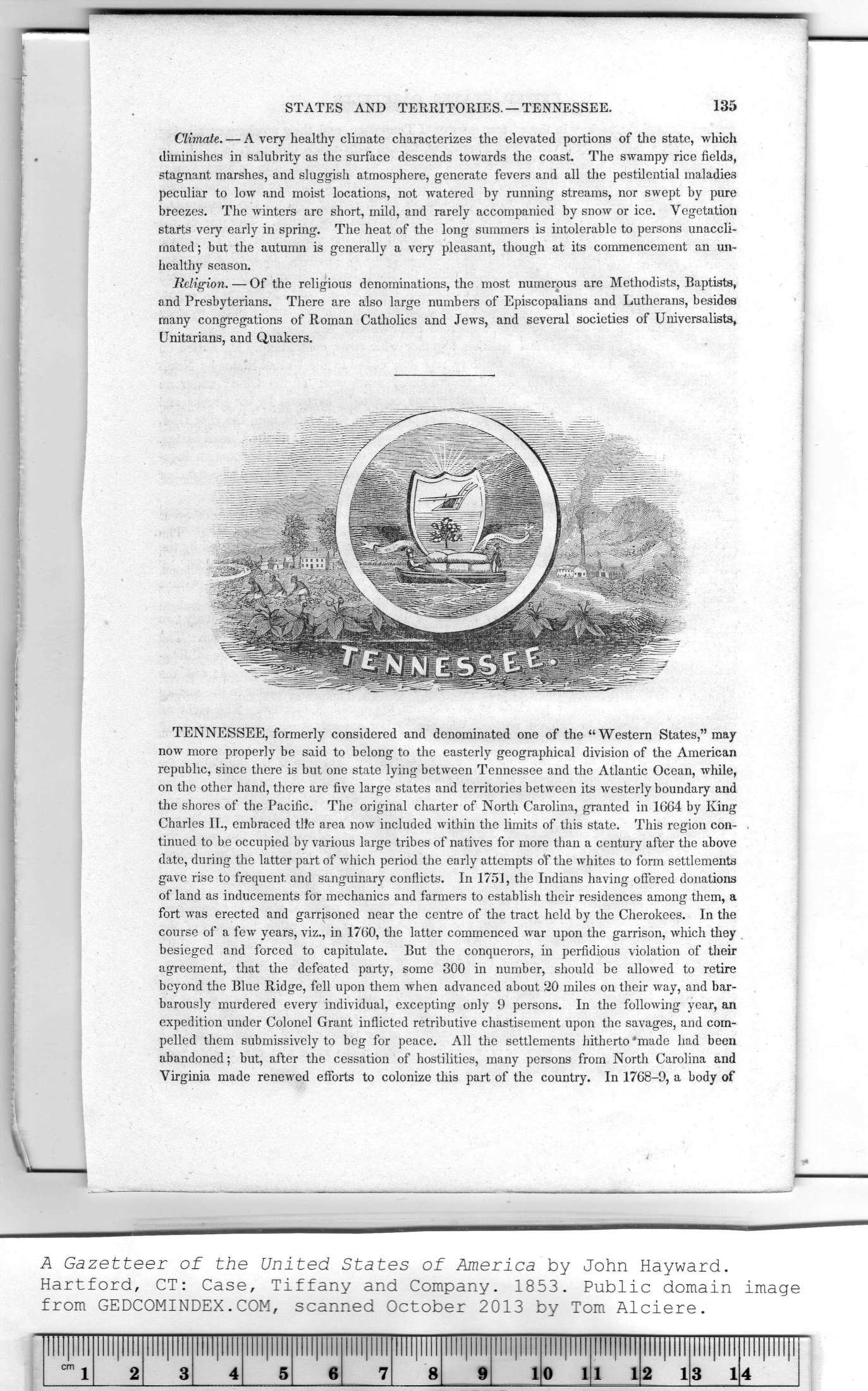|
|
Note: Ctrl and + increases the font size of the text below, Ctrl and - decreases it, and Ctrl and 0 resets it to default size.
STATES AND TERRITORIES. —TENNESSEE. 135
Climate. — A very healthy climate characterizes the elevated portions of the state, which
diminishes in salubrity as the surface descends towards the coast. The swampy rice fields,
stagnant marshes, and sluggish atmosphere, generate fevers and all the pestilential maladies
peculiar to low and moist locations, not watered by running streams, nor swept by pure
breezes. The winters are short, mild, and rarely accompanied by snow or ice. Vegetation
starts very early in spring. The heat of the long summers is intolerable to persons unaccli-
mated ; but the autumn is generally a very pleasant, though at its commencement an un-
healthy season.
jReligion. — Of the religious denominations, the most numerous are Methodists, Baptists,
and Presbyterians. There are also large numbers of Episcopalians and Lutherans, besides
many congregations of Roman Catholics and Jews, and several societies of Universalists,
Unitarians, and Quakers.
TENNESSEE, formerly considered and denominated one of the “Western States," may
now more properly be said to belong to the easterly geographical division of the American
republic, since there is but one state lying between Tennessee and the Atlantic Ocean, while,
on the other hand, there are five large states and territories between its westerly boundary and
the shores of the Pacific. The original charter of North Carolina, granted in 1664 by King
Charles II., embraced tile area now included within the limits of this state. This region con-
tinued to be occupied by various large tribes of natives for more than a century after the above
date, during the latter part of which period the early attempts of the whites to form settlements
gave rise to frequent, and sanguinary conflicts. In 1751, the Indians having offered donations
of land as inducements for mechanics and farmers to establish their residences among them, a
fort was erected and garrisoned near the centre of the tract held by the Cherokees. In the
course of a few years, viz., in 1760, the latter commenced war upon the garrison, which they
besieged and forced to capitulate. But the conquerors, in perfidious violation of their
agreement, that the defeated party, some 300 in number, should be allowed to retire
beyond the Blue Ridge, fell upon them when advanced about 20 miles on their way, and bar-
barously murdered every individual, excepting only 9 persons. In the following year, an
expedition under Colonel Grant inflicted retributive chastisement upon the savages, and com-
pelled them submissively to beg for peace. All the settlements hitherto 'made had been
abandoned; but, after the cessation of hostilities, many persons from North Carolina and
Virginia made renewed efforts to colonize this part of the country. In 1768-9, a body of
A Gazetteer of the United States of America by John Hayward.
Hartford, CT: Case, Tiffany and Company. 1853. Public domain
|
